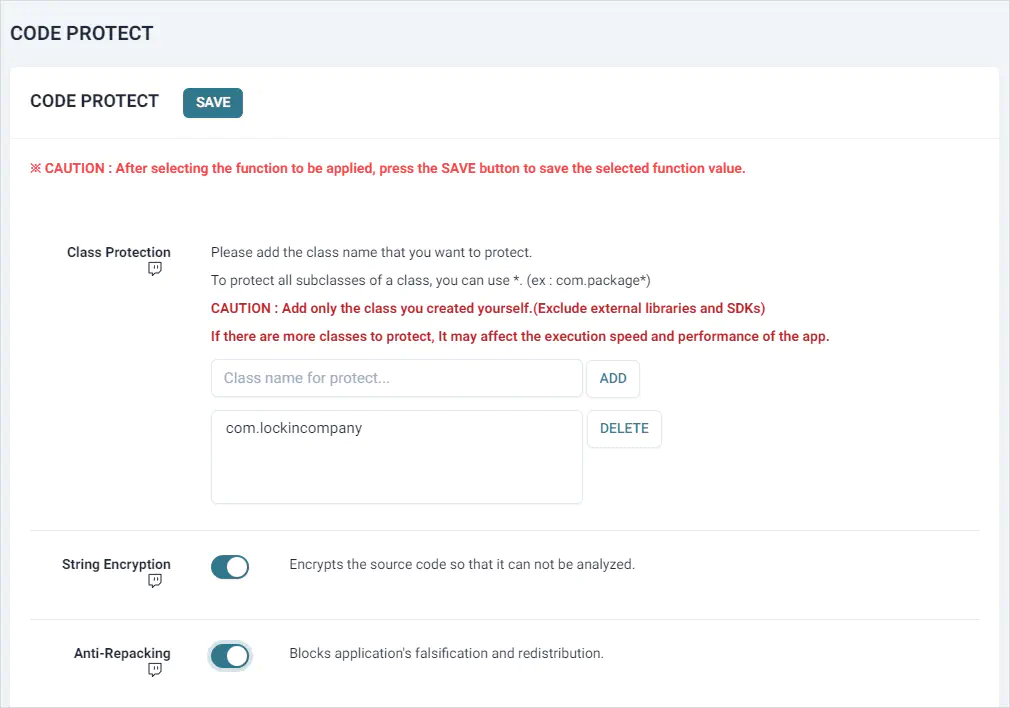Code Protection
CODE PROTECTION PAGE provides features to protect CODE used in APP.
To go to the CODE PROTECTION PAGE, click the Code Protection from the PROTECTION menu on the left after log in.
You can check and change the saved settings by selecting APP from CODE PROTECTION PAGE or go to the CODE PROTECTION PAGE after selecting APP.
Each feature can be set or changed as follows depending on the properties of the option.
Switch
The options will be changed if you click switch. (Except for the necessary options)Option Description OFF Features will not be applied. ON Features will be applied. Type Text

To add items, type the Class name or file name that needs protection in Text Field and click the ADD button. Items registered in LIST BOX will be shown.
Select the item to delete, and press the DELETE button to delete the item.
After changing the settings, click the button on the top of the page to save the changes.
Changed settings will not be saved if you exit the page without pressing button.
The follows are features provided to protect CODE. You can check the details by clicking each feature name.
Class Protection
A feature that protects the Class used by the APP.
By protecting the Class used by the APP, it prevents information leakage and analysis of source code.
String Encryption
A feature that encrypts the string declared in the source code.
It protects important information by encrypting the string declared in the source.
Anti-Repackaging
A feature that prevents the repackaging of the APP.
It prevents APP repackaging which conducted for malicious purposes such as redistribution of APP after illegal modification.
Unity Protection
A feature that protects the Unity engine used by the APP.
By protecting important Unity code created by the user, it prevents the APP source code leakage and analysis.
NLP(Native Library Protection)
A feature that protects library by using JNI.
By protecting the library used by the APP, it prevents the leakage of critical information.